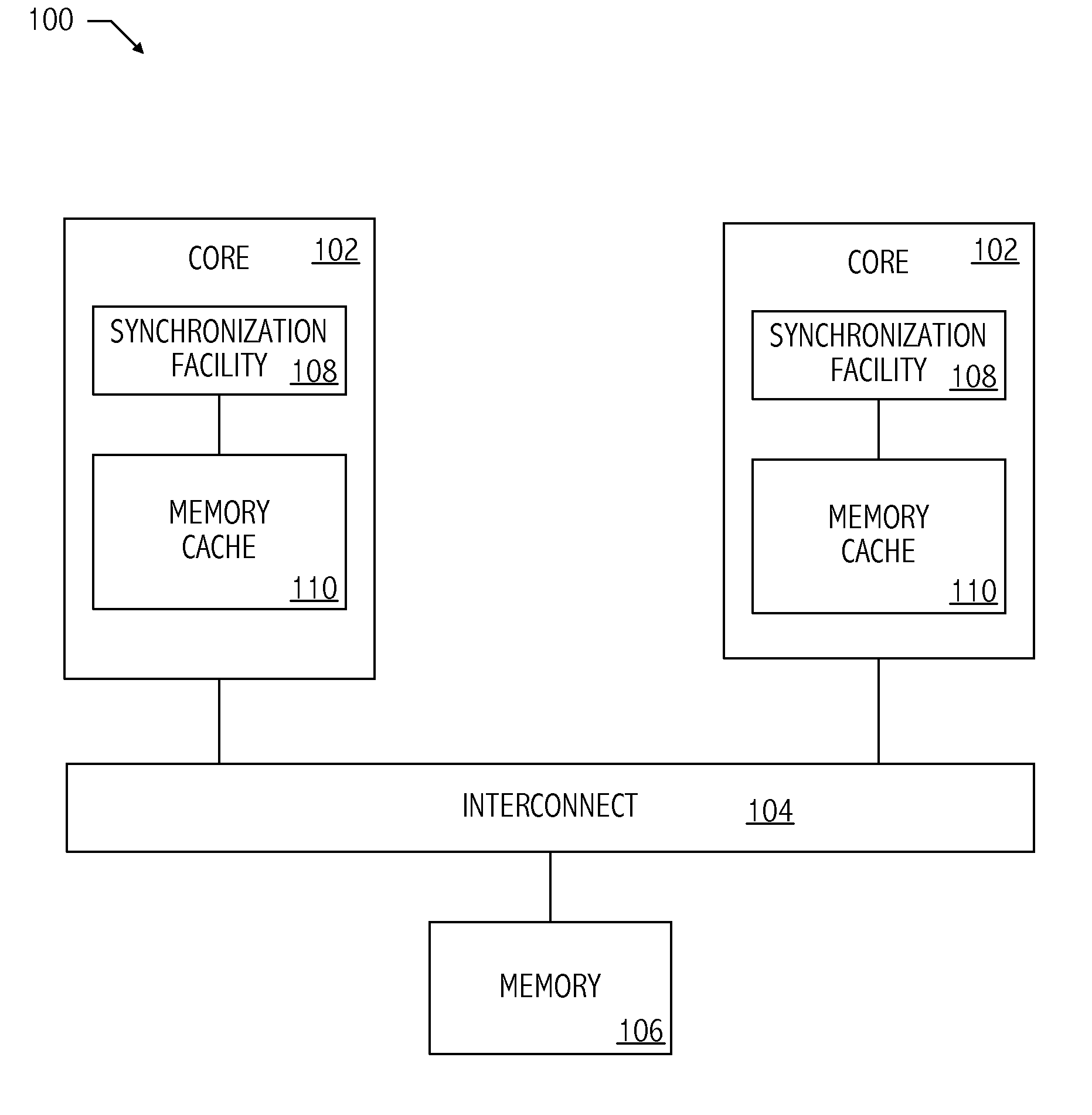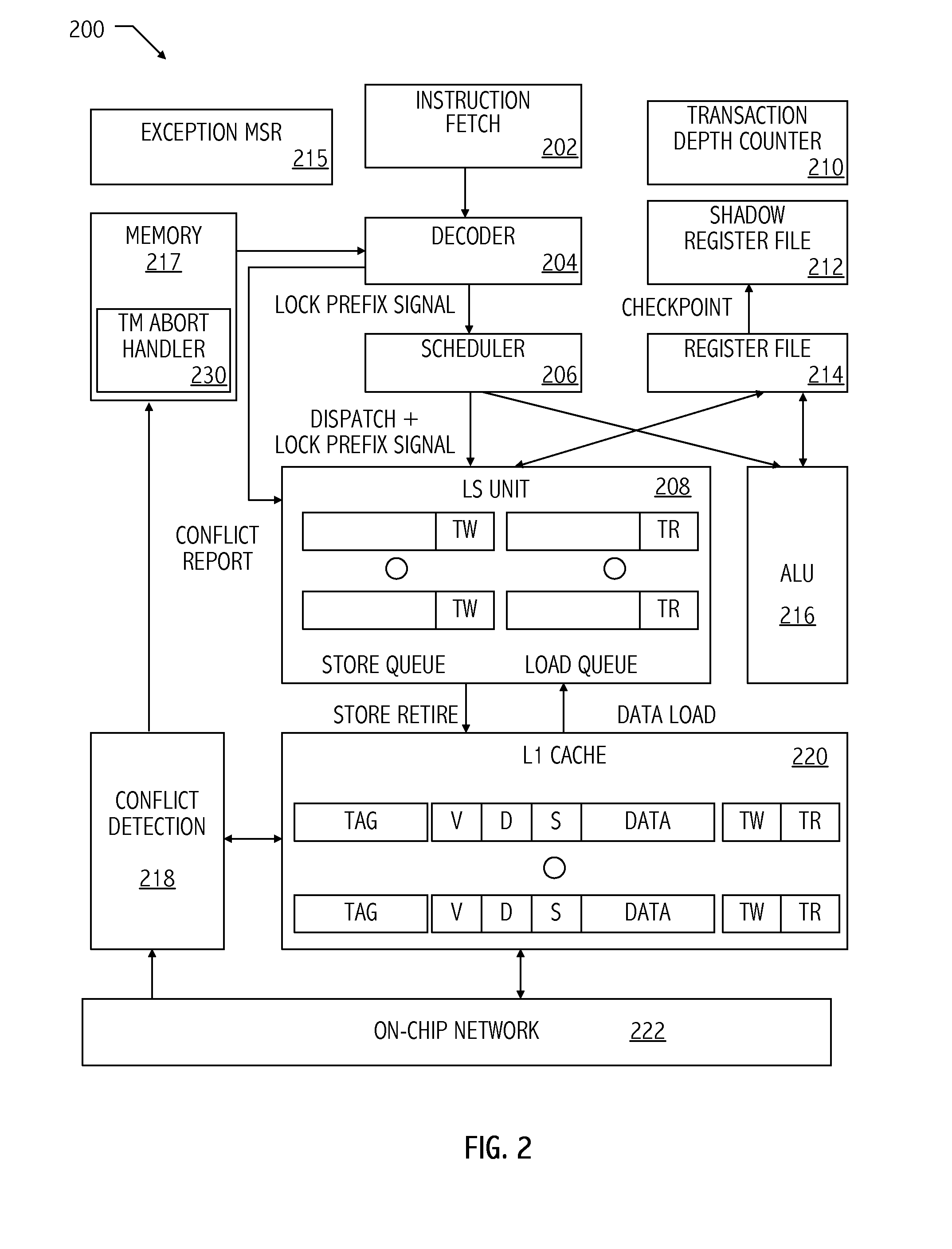Inverted default semantics for in-speculative-region memory accesses
a memory access and default semantic technology, applied in the field of parallel processing computing systems, can solve the problems of increasing programming complexity and dissuading programmers from fully utilizing parallel programming techniques
- Summary
- Abstract
- Description
- Claims
- Application Information
AI Technical Summary
Benefits of technology
Problems solved by technology
Method used
Image
Examples
Embodiment Construction
[0005]In at least one embodiment of the invention, a method for accessing memory by a first processor of a plurality of processors in a multi-processor system includes, responsive to a memory access instruction in a speculative region of a program, accessing contents of a memory location using a transactional memory access according to the memory access instruction unless the memory access instruction indicates a non-transactional memory access. The method may include accessing contents of the memory location using a non-transactional memory access by the first processor according to the memory access instruction responsive to the instruction not being in the speculative region of the program. The method may include updating contents of the memory location responsive to the speculative region of the program executing successfully and the memory access instruction not being annotated to be a non-transactional memory access.
[0006]In at least one embodiment of the invention, an apparat...
PUM
 Login to View More
Login to View More Abstract
Description
Claims
Application Information
 Login to View More
Login to View More - R&D
- Intellectual Property
- Life Sciences
- Materials
- Tech Scout
- Unparalleled Data Quality
- Higher Quality Content
- 60% Fewer Hallucinations
Browse by: Latest US Patents, China's latest patents, Technical Efficacy Thesaurus, Application Domain, Technology Topic, Popular Technical Reports.
© 2025 PatSnap. All rights reserved.Legal|Privacy policy|Modern Slavery Act Transparency Statement|Sitemap|About US| Contact US: help@patsnap.com



